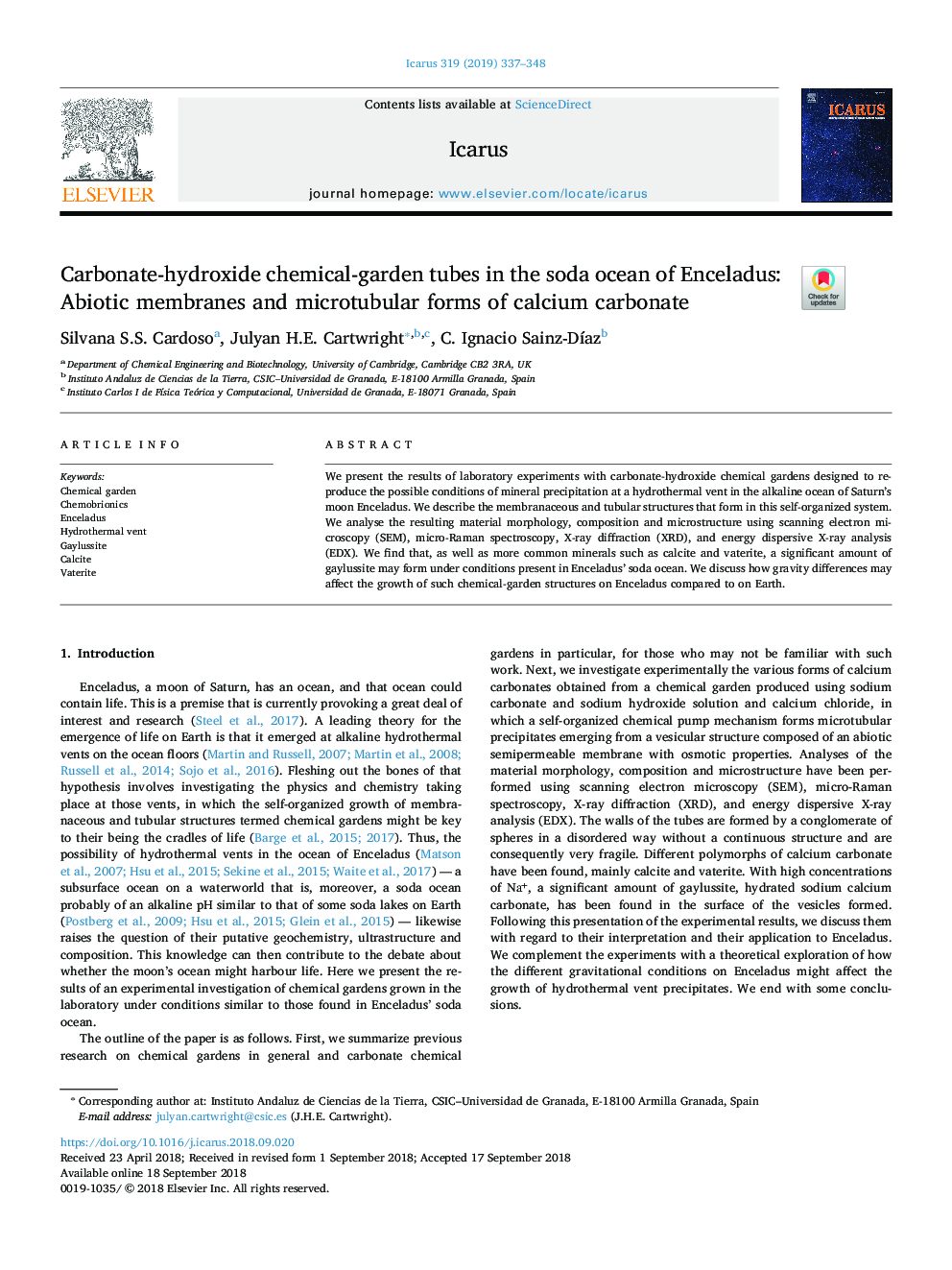| Article ID | Journal | Published Year | Pages | File Type |
|---|---|---|---|---|
| 11026368 | Icarus | 2019 | 12 Pages |
Abstract
We present the results of laboratory experiments with carbonate-hydroxide chemical gardens designed to reproduce the possible conditions of mineral precipitation at a hydrothermal vent in the alkaline ocean of Saturn's moon Enceladus. We describe the membranaceous and tubular structures that form in this self-organized system. We analyse the resulting material morphology, composition and microstructure using scanning electron microscopy (SEM), micro-Raman spectroscopy, X-ray diffraction (XRD), and energy dispersive X-ray analysis (EDX). We find that, as well as more common minerals such as calcite and vaterite, a significant amount of gaylussite may form under conditions present in Enceladus' soda ocean. We discuss how gravity differences may affect the growth of such chemical-garden structures on Enceladus compared to on Earth.
Related Topics
Physical Sciences and Engineering
Earth and Planetary Sciences
Space and Planetary Science
Authors
Silvana S.S. Cardoso, Julyan H.E. Cartwright, C. Ignacio Sainz-DÃaz,
